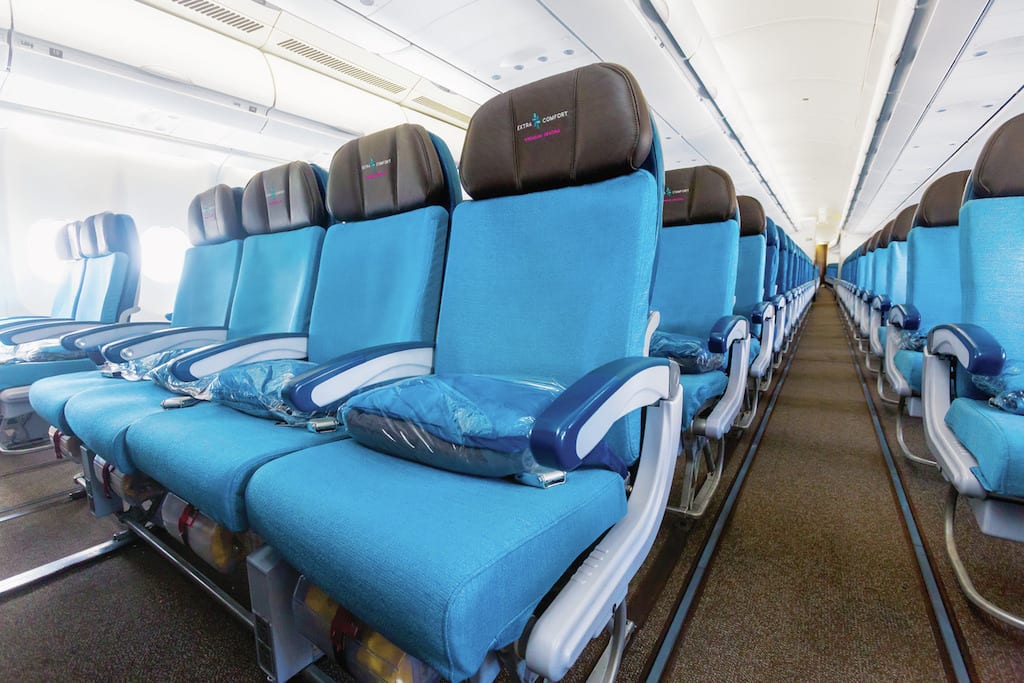Skift Take
Hawaiian Airlines has been an investor darling for a while. It has dominated its home market, and earned hefty profit. But are market dynamics changing?
Hawaiian Airlines said Wednesday it will miss its fourth-quarter revenue targets by a considerable margin, blaming lower-than-expected fares and demand in key markets, but its problems appear isolated and likely don’t affect the broader U.S. airline industry.
Routes from the mainland United States to Hawaii are among the most competitive in North America, as U.S. airlines in the past three years have add capacity to what long had been a robust market with high fares. Recently, carriers have reported difficulty selling the extra seats, at least at reasonable prices.
Hawaiian had hoped to have more pricing power as fuel prices increased earlier this year, but on Wednesday it said fares for North America-Hawaii routes have not been as strong as predicted. And it noted that, while more passengers are visiting Hawaii this year than last, the number of new travelers has not kept pace with new industry capacity.
Add that to softness in the inter-island Hawaii market, where Hawaiian has almost no competition — the airline said demand to the island of Hawaii came in lower than planned — and it is shaping up to be a rougher-than-planned final three months of the year.
In October, Hawaiian had predicted fourth-quarter revenue per available seat mile, or RASM, a metric how much money a carrier makes for each seat it flies one mile, would range from an increase of 0.5 percent year-over-year, to a decrease of 2.5 percent.
On Wednesday, it said would definitely fall, likely between 3 and 5 percent.
It was the second U.S. carrier to warn about the year’s final quarter, joining Delta Air Lines, which on Tuesday said its unit revenues would come in slightly lower than some analysts had hoped, though within the airline’s target estimates.
Delta’s unit revenues should increase 3.5 percent-year-over-year, at the lower edge of the carrier’s 3 to 5 percent guide.
Hawaii a Unique Market
Hawaiian’s revenue miss is an issue for the airline management and shareholders, but it is probably not an indication something is amiss for other U.S. airlines.
It is no secret U.S. airlines have been dumping capacity, leading to fares as low as $199 from Los Angeles to Hawaii. The softness also has been a problem for Alaska Airlines, which flies about 13 percent of its overall capacity to Hawaii.
Alaska has said on recent earnings calls that its Hawaii franchise is not performing as well as it had, also blaming new capacity. Given that Hawaiian’s entire business touches the islands, it is little surprise the airline is facing even more revenue pressure than its U.S. rivals.
Hawaiian’s troubles could worsen next year, as Southwest Airlines prepares to enter the market. Southwest has not yet said when it will begin Hawaii flights, but Stifel analyst Joseph W. DeNardi said this week he expects it will not happen until the second or third quarter of 2019.
In addition to transpacific flights from four West Coast cities, Southwest also plans limited inter-island service, challenging Hawaiian’s monopoly.
Hawaiian has said it is prepared for the new competition, but it is also increasingly seeking to shore up its business outside of the United States, as something of a hedge. The airline recently cut a poorly performing route to Beijing, and is seeking a new joint venture, immune from anti-trust laws, with Japan Airlines.
The joint venture could help Hawaiian and JAL better compete with All Nippon Airways, which next spring will begin flying 520-seat Airbus A380s from Tokyo to Honolulu.
Probably Not a Trend
Outside of some competitive pockets that may have too much capacity, the overall U.S. industry appears to be performing well, with many airlines predicting robust unit revenue gains for the quarter.
Late last month, Spirit Airline said its revenue per available seat mile should increase roughly 11 percent, driven by higher ancillary revenues and load factors, sending its stock soaring.
United Airlines hasn’t updated its unit revenue guidance since Oct. 16, when it estimated unit revenue gains between 3 and 5 percent, but Chief Commercial Officer Andrew Nocella said last week that the airline is seeing “really strong demand” across most markets.
In its update on Monday, Delta did not give much detail about why it will fall just short of the mid-point of its unit revenue guidance.
It could be that fares in its markets have been falling as fuel prices have cratered. Fuel prices, which peaked for the year on Oct. 3, are down about 30 percent since then.
But that’s probably not likely, Hunter Keay, an analyst with Wolfe Research, wrote on Tuesday. He noted fares generally don’t fall until network planners add more capacity and airlines reduce prices to fill the extra seats. While airlines can cut routes quickly, as they did this summer fall amid higher fuel prices, it takes them longer to add new ones when oil prices fall.
Thus, Keay said, it’s probably too early to see much change in pricing strategy.
“Some of this has perhaps crept into the holiday season outlook, but we are hesitant to extrapolate Delta’s result to the rest of the group and instead cautiously conclude for the time being that this is merely just a result of another overly optimistic initial outlook by Delta and not a crack in the broader airline industry story,” Keay said.
The Daily Newsletter
Our daily coverage of the global travel industry. Written by editors and analysts from across Skift’s brands.
Have a confidential tip for Skift? Get in touch
Tags: airline innovation, hawaiian airlines, U.S. airlines
Photo credit: Hawaiian Airlines is having trouble filling seats at reasonable prices. Pictured is the airline's extra-legroom section on an Airbus A330. Rae Huo / Hawaiian Airlines
